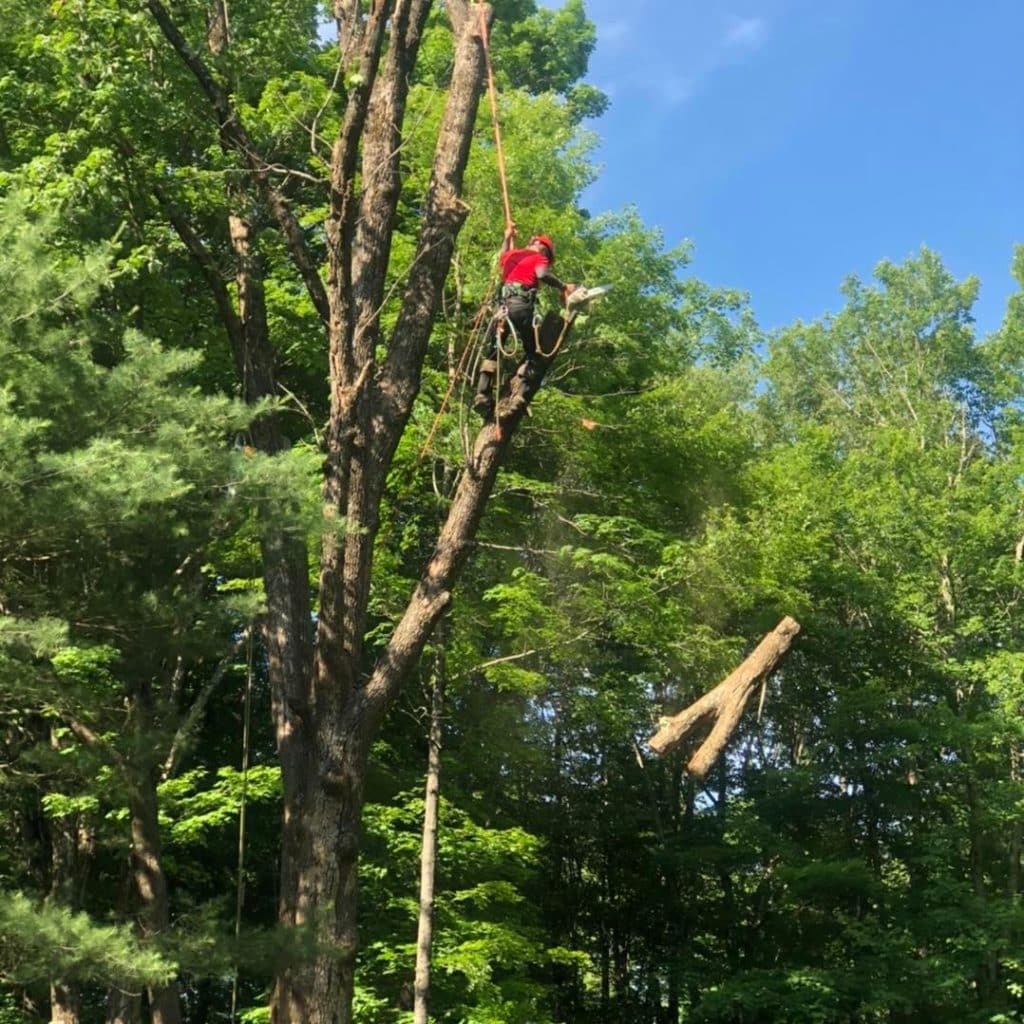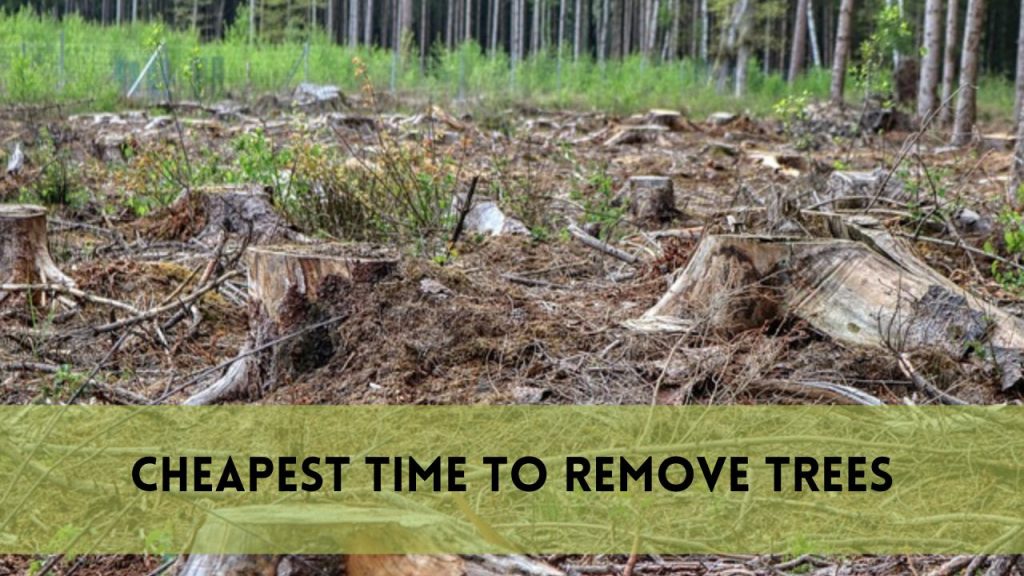Welcome to our helpful advice on the sometimes ignored issue of tree removal within a homeowners association (HOA). You’ve come to the perfect site if you’ve ever asked, “Do I need HOA approval to remove a tree?” In this post, we’ll dig into the complexities of HOA tree removal, provide professional views, and answer your burning concerns.
It’s critical to understand the significance of tree removal in preserving the beauty and safety of your neighborhood if you live in a HOA. Trees may offer shade, improve curb appeal, and even boost the value of a home. However, there are times when a tree must be removed.
The Importance of seeking Approval from HOA
Within a HOA, tree removal is critical to the community’s general health, safety, and aesthetics. Trees provide several benefits, including shade, improved curb appeal, and even increased property prices. However, in other cases, tree removal is required to protect the safety of the neighborhood.
Seeking HOA clearance for different acts, including tree removal, is critical within a homeowners organization (HOA). It is an important part of community government since it ensures that decisions made by individual homeowners are consistent with the neighborhood’s common interests and standards.
First and foremost, HOA approval protects the general well-being of the neighborhood. It enables the HOA board to examine the proposed action’s possible impact on safety, aesthetics, and property values. In the case of tree removal, getting consent helps prevent rash actions that might threaten the safety of homeowners and their homes.
Obtaining HOA permission also fosters a feeling of justice and equity among residents. It maintains the notion that no one’s activities should infringe on the rights or enjoyment of others. It promotes a process of communal decision-making that, when balanced and intelligent, benefits the entire community.
Why Tree Removal May Be Necessary?
Tree removal inside a HOA may be required for a variety of reasons, including:
Disease or insect infestation: When a tree becomes infected or infested with pests, it poses a risk to other trees in the region. Diseases may spread, wreaking havoc on the entire terrain.
Structural issues: Trees with structural issues, such as decay or instability, can become hazardous during storms. A weakening tree might collapse, causing damage to buildings and automobiles as well as posing a risk to occupants.
Root damage : Overgrown roots can cause damage to sidewalks, roads, and even home foundations. This might result in costly repairs as well as safety problems for people.
Aesthetics: HOAs frequently set requirements for maintaining the community’s unified appearance. An unattractive or overgrown tree can distract from the neighborhood’s overall appeal.
Do I Need HOA Approval to Remove a Tree?
One of the most prevalent queries among HOA residents is whether they need permission to remove a tree from their property. The answer is emphatically “yes.” HOAs often have stringent rules and restrictions in place, and tree removal comes within their purview.
The process
Within a HOA, the following actions are routinely taken:
Consult HOA Guidelines: The first step is to thoroughly research your HOA’s bylaws and restrictions regulating tree removal. These documents detail the unique needs, processes, and constraints in place. Some HOAs may even have a list of authorized tree removal businesses that homeowners are compelled to utilize.
Submit a Request: Once you’ve read the HOA requirements, you must contact your HOA and formally request tree removal. Make sure to include thorough information about the reasons for removal, such as sickness, safety issues, or property damage, in this request.
Professional Evaluation: The HOA may require a trained arborist to examine the tree’s condition. This phase guarantees that a certified specialist assesses the tree’s health and any threats objectively and impartially.
Board Approval: Once your request is received, it will be forwarded to the HOA board for approval. The board will review your proposal based on the set parameters, taking into account elements such as aesthetics and safety concerns. In rare situations, the board may propose alternatives to removal if they feel it is in the best interests of the community.
Secure Permits: If your request is approved, you must secure any appropriate permits from local authorities before beginning with tree removal. Failure to get these permits may result in legal issues and penalties.
Professional Removal: To ensure the safe and proper removal of the tree, it’s advisable to hire a professional tree removal service. Certified arborists or reputable tree removal companies have the expertise and equipment required to conduct the removal safely and efficiently.
Expert Insights on the Approval Process
To provide you with a more profound understanding of the HOA approval process for tree removal, we’ve sought expert opinions from professionals in the field.
Expert Opinion – Sarah Green, Certified Arborist
“HOA guidelines are used to strike a balance between the rights of individual homeowners and the community’s collective interests.” When dealing with tree removal, it is critical to contact a professional arborist who can offer an unbiased assessment of the tree’s health and any threats. This professional judgment may greatly influence the approval process and guarantee that the choice is in the best interests of the community.”
Expert Opinion – John Anderson, HOA Board Member
“As a board member, our primary concern is the safety and visual appeal of the community.” We take each tree removal request seriously, carefully analyzing the impact on the general aesthetics of the neighborhood as well as any potential safety hazards. It’s a fine line between honoring individual property rights and protecting the HOA’s collective interests.”
FAQS
Can I remove a tree without the HOA’s permission?
No, you must acquire HOA consent before proceeding with tree removal in your neighborhood. Unauthorized tree removal can result in penalties and legal ramifications.
How long does the approval process generally take?
The approval procedure might take a few weeks to a number of months from the original request to approval. The length of time can be affected by factors such as the intricacy of the issue and the responsiveness of your HOA.
Is it required to hire a competent arborist for the evaluation?
While it is not always necessary, having a qualified arborist do a professional examination can have a significant influence on the clearance decision. Their expertise and objective evaluation
How long does the approval process generally take?
The approval procedure might take a few weeks to a number of months from the original request to approval. The length of time can be affected by factors such as the intricacy of the issue and the responsiveness of your HOA.
Do I need to engage a qualified arborist for the assessment?
While it is not always required, having a licensed arborist do a professional evaluation can have a substantial impact on the clearance decision. Their experience and objective judgment can be important in the decision-making process.
Conclusion
In conclusion, if you’re wondering, “Do I need HOA approval to remove a tree?” the answer is unequivocally yes. It’s essential to follow your HOA’s guidelines and regulations, ensuring that tree removal is conducted safely and in harmony with the community’s aesthetics. Expert insights, professional assessments, and compliance with the approval process are key to a successful tree removal within an HOA.




